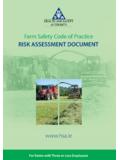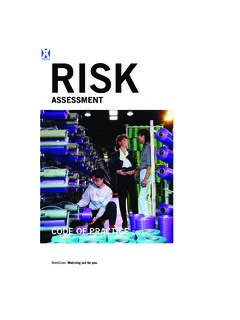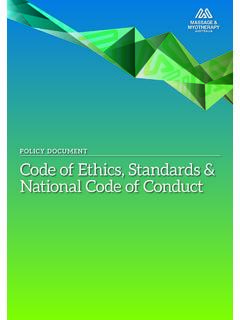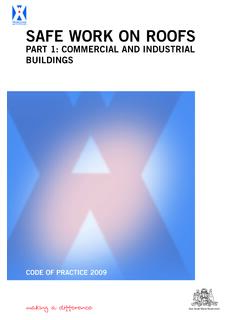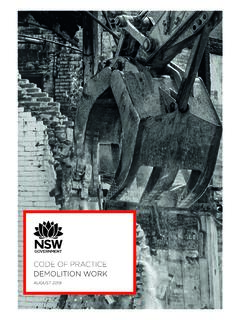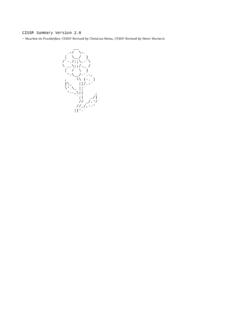Transcription of PAS 9980 Fire risk appraisal and assessment of external ...
1 WARNING. THIS IS A DRAFT AND MUST NOT BE REGARDED OR USED AS A PUBLISHED PAS. THIS DRAFT IS NOT CURRENT BEYOND 20 MAY 2021. 1 The British Standards Institution 2021 PAS 9980 Fire risk appraisal and assessment of external wall construction and cladding of existing blocks of flats code of practice Please submit comments through the online Standards Development Portal: by Thu 20 May 2021 Thank you THIS IS A WORKING DRAFT AND MUST NOT BE REGARDED OR USED AS A PUBLISHED PAS THIS DRAFT IS NOT CURRENT BEYOND 20 MAY 2021 No copying is allowed, in any form, without written permission from BSI except as permitted under the Copyright, Design and Patent Act 1988 or for circulation within a participating organization and/or its membership network for briefing purposes.
2 Electronic circulation is limited to dissemination by email within such an organization and its members. Please note that this is a draft and not a typeset document . Editorial comments are welcome, but you are advised not to comment on detailed matters of typography and layout. Any formatting in this draft is to aid readability and does not reflect the final format of PAS 9980. WARNING. THIS IS A DRAFT AND MUST NOT BE REGARDED OR USED AS A PUBLISHED PAS. THIS DRAFT IS NOT CURRENT BEYOND 20 MAY 2021. 2 The British Standards Institution 2021 Contents Foreword 4 0 Introduction 8 1 Scope 13 2 Normative references 14 3 Terms, definitions and abbreviated terms 14 4 Limitations of this PAS 20 5 Analysis of the problem 23 Figure 1 Typical scenario in which external fire spread is restricted, with some, but limited, scope for secondary fires on floors above 24 Figure 2 Potential scenario resulting in rapid external fire spread and significant risk of multiple secondary fires 25 Figure 3 Fire at Garnock Court, Irvine 27 Figure 4 Fire at Shepherd s Court, London 27 Figure 5 Fire at Samuel Garside House, Barking 28 Figure 6 Fire at the Cube.
3 Bolton 28 Figure 7 Fire in high-rise block resulting in limited external spread 29 6 Legislative context 32 7 Principles and scope of the fire risk appraisal and assessment (FRAA) 36 Figure 8 Key considerations in arriving at a risk rating for external walls 39 Figure 9 Risk outcomes in relation to expectations of the rate of fire spread over the external walls 41 8 Competence of external wall assessors 44 9 Information required for completion of the FRAA 47 10 The FRAA site survey and inspection 51 11 Fire performance of different external wall materials, systems and configurations 55 12 Considerations for fully and partially clad buildings 60 13 Methodology for basic assessment of the suitability of existing external wall construction 62 Figure 10 Five step approach to the basic level of assessment 63 Figure 11 Process for determining whether the external wall construction is within the scope of this PAS 65 Figure 12 Possible outcome of risk factor weighting 67 Figure 13 Starting point for applying the risk factors 68 Figure 14 Applying the risk factors consideration of fire performance 69 Figure 15 Applying the risk factors consideration of fa ade configuration 69 Figure 16 Applying the risk factors consideration of fire strategy/fire hazards 70 14
4 Application of fire engineering analysis as part of further technical assessment 73 15 Scope and format of the FRAA report 74 Annex A (informative) A guide to small, intermediate and large-scale fire tests for external wall construction 78 Figure Specimen holder of BS 476-7 test apparatus in test position 78 Figure Plot of radiation over distance from the BS 476-7 radiant panel with positions of classes along the sample indicated (final positions at the end of the test) 79 Figure BS 476-7 apparatus with location of pilot flame arrowed 79 Table Classification of spread of flame 80 Figure BS 476-6 test apparatus 80 Figure BS EN ISO 11925-2 test apparatus with sample under test 82 Figure Test apparatus for BS EN 13823 83 Table Requirements for classes of materials and products (excluding floorings and pipe insulation) under BS EN 13501-1 85 Table Smoke production classification For products classified A2 to D 85 Table Flaming droplets/particles classification For products classified A2 to D 86 Figure Location of thermocouples for a cladding test 87 WARNING.
5 THIS IS A DRAFT AND MUST NOT BE REGARDED OR USED AS A PUBLISHED PAS. THIS DRAFT IS NOT CURRENT BEYOND 20 MAY 2021. 3 The British Standards Institution 2021 Figure Illustration of thermocouple locations in the layers of the test system 88 Figure Typical BS 8414 timber crib 88 Figure Time temperature curve defined in ISO 834 90 Annex B (informative) Requirement B4(1) (of Part B of Schedule 1 to the Building Regulations 2010) and associated recommendations of Approved document B 91 Figure Routes to compliance with B4(1) relating to guidance in Approved document B and BCA Technical Guidance Note 18 93 Annex C (informative) A history of relevant standards, codes of practice and guidance 94 Table Model Byelaws 1953 94 Table Building Regulations 1965 95 Table Building Regulations 1972 96 Table Building Regulations 1976 97 Table Building Regulations 1985 and Approved document B 1985 98 Table Building Regulations 1991 and Approved document B 1992 99 Table Building Regulations 2000 and Approved document B 2000 100 Table Building Regulations 2000 and Approved document B 2006 101 Table Building Regulations 2010 and Approved document B 2019 102 Annex D (informative) A history of notable external wall fires 103 Table Notable cladding fires 103 Annex E (informative)
6 Selection of a competent external wall assessor 105 Table Expected skillsets of an external wall assessor 105 Annex F (informative) Fire performance risk factors 107 Table Fire performance risk factors 108 Annex G (informative) Generic fire properties of external wall materials, systems and configurations 114 Table Fire properties of common elements Structural elements 114 Table Fire properties of common elements Plasterboard and sheathing boards 115 Table Fire properties of common elements Insulation 116 Table Fire properties of common elements Cavities 117 Figure Cavity barriers versus fire stopping versus fire barriers at junctions of floors and external walls 119 Table Fire properties of common elements Glazing 120 Table Fire properties of common elements Other generic components 121 Table Fire properties of common system types Masonry systems 125 Table Fire properties of common system types Rainscreen systems 126 Table Fire
7 Properties of common system types Rainscreen facing materialsA) 126 Table Further considerations for specific system types 129 Annex H (informative) Fa ade configuration risk factors 131 Table Fa ade configuration risk factors 132 Annex I (informative) Fire strategy/fire hazard factors 140 Table Fire strategy/fire hazard risk factors 141 Annex J (informative) Case studies with working examples illustrating the use of the methodology 147 Annex K (informative) Considerations in an in-depth technical assessment using fire engineering analysis 163 Table Typical indicators of level of encapsulation 165 Table Relevance of reaction to fire classes for cavity absence 167 Table Relevance of heat of combustion by mass for cavity absence 168 Table Relevance of heat of combustion by area for cavity absence 169 Table Compartmentation continuation assessment 170 Table Typical examples of critical success factors 175 Table Subdivision risk evaluation 176 Table Typical consequence mitigation options 176 Bibliography 179 WARNING.
8 THIS IS A DRAFT AND MUST NOT BE REGARDED OR USED AS A PUBLISHED PAS. THIS DRAFT IS NOT CURRENT BEYOND 20 MAY 2021. 4 The British Standards Institution 2021 Foreword Publishing information This PAS was sponsored jointly by MHCLG and the Home Office. Its development was facilitated by BSI Standards Limited and it was published under licence from The British Standards Institution. It came into effect on XX Month 201X. Acknowledgement for the drafting of this PAS is given to Todd & Associates and a team of experts comprising: DCCH Experts LLP; Design Fire Consultants; TENOS; Probyn Miers (HKA Global Ltd). Acknowledgement is given to the following organizations that were involved in the development of this PAS as members of the steering group.
9 Building Research Establishment Construction Products Association Consumer and Public Interest Network Fire Industry Association Institution of Fire Engineers Local Authority Building Control London Fire Brigade National Fire Chiefs Council National Social Housing Fire Safety Group Royal Institution of Chartered Surveyors Scottish Government Society of Fa ade Engineering Society of Fire Protection Engineers Acknowledgement is also given to the members of a wider review panel who were consulted in the development of this PAS. The British Standards Institution retains ownership and copyright of this PAS. BSI Standards Limited as the publisher of the PAS reserves the right to withdraw or amend this PAS on receipt of authoritative advice that it is appropriate to do so.
10 This PAS will be reviewed at intervals not exceeding two years. This PAS is not to be regarded as a British Standard. It will be withdrawn in the event of its being superseded by a British Standard. The PAS process enables a code of practice to be rapidly developed in order to fulfil an immediate need in industry. A PAS can be considered for further development as a British Standard, or constitute part of the UK input into the development of a European or International Standard. WARNING. THIS IS A DRAFT AND MUST NOT BE REGARDED OR USED AS A PUBLISHED PAS. THIS DRAFT IS NOT CURRENT BEYOND 20 MAY 2021. 5 The British Standards Institution 2021 Relationship with other publications This PAS supplements the recommendations given in PAS 79-2. This PAS is not intended to constitute a textbook on building, external wall or cladding construction, and it is not to be regarded as a substitute for relevant knowledge of fire safety principles in the design of such construction.
